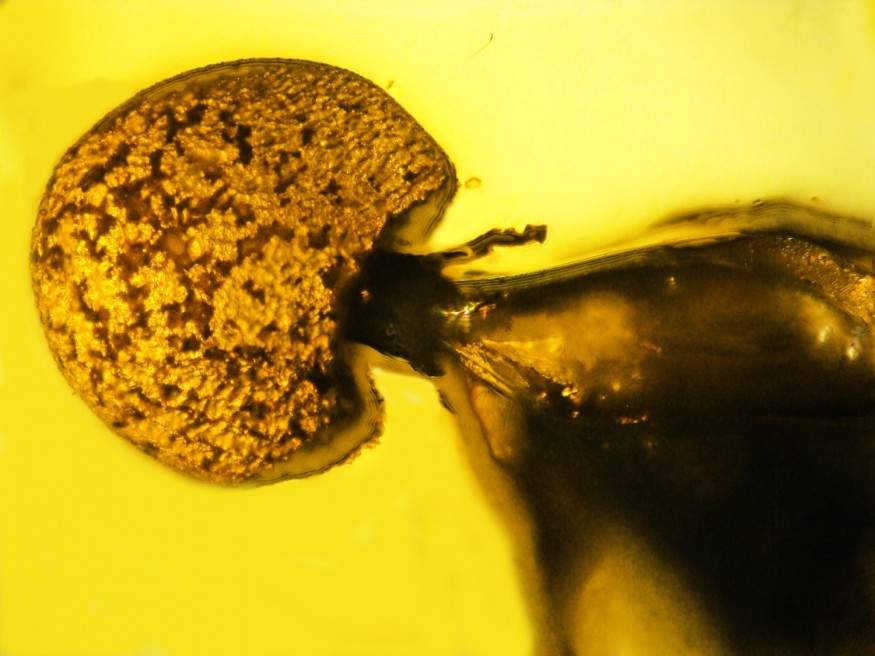A new type of prehistoric parasitic fungus has been discovered erupting from the posterior of a 50 million-year-old ant, perfectly preserved in amber.
The bizarre fungus can be found throughout the body of its unfortunate host, in addition to the bulbous mushroom protruding from the ant's rectum. The ant most likely perished due to its fungal infestation and was then preserved in tree resin (which fossilizes into amber). It is the first time a fungal parasite has been found in ants.
The researchers gave the new fungus species the name Allocordyceps baltica. Allocordyceps means "new genus" in Greek, while baltica alludes to the Baltic region where experts found the amber.
"We can see a large, orange, cup-shaped ascoma with developing perithecia — flask-shaped structures that let the spores out — emerging from the rectum of the ant," George Poinar Jr., an entomologist at Oregon State University who helped pioneer the extraction of DNA from amber, said in a statement.

Unique Parasite
Poinar told Live Science such discoveries are quite uncommon. He noted that the amber resin has compounds that "fix cells and tissues while also destroying accompanying bacteria that would typically disintegrate specimens."
Because of their brief life cycles, the parasitic fungus is difficult to discover and research, according to Poinar. "However, we all have some fungus on our bodies," he noted.
Insects are an ideal host for these parasites because they are plentiful and provide a rich source of nutrition, according to Poinar.
Modern parasitic fungi of the genus Ophiocordyceps, which belong to the same order as A. baltica, are common hosts of Carpenter ants of the species Camponotus, like the one caught in the amber.
Although A. baltica is likely extinct now, Poinar believes that its lineage may have evolved into modern-day Ophiocordyceps, but this has yet to be proven genetically.
Out the Backdoor
The fundamental distinction between A. baltica and Ophiocordyceps is where the mushroom pops out from an ant. The mushroom, called ascomata, is the fungi's reproductive organ that releases spores into the environment. The ascomata of Ophiocordyceps fungi grow around the neck and head of its host ants. The fungi would use mind control to force the ants to bite into plants where other carpenter ants deposit their eggs. This allows the fungi to disseminate their spores in places where there are a lot of possible new hosts.
Researchers are still baffled as to why A. baltica grew its ascomata through the ant's rectum instead. However, experts believe that it may have allowed the fungus to maintain its host alive for longer, giving it more time to spread spores.
Nasty Way to Go
Although the reproductive ascomata emerge from the fossilized ant's rectum, there is evidence that the fungus traveled throughout the ant's entire body. For example, Stromata — or solid plates of the fungus' vegetative part, known as mycelium — can be seen protruding from the ant's abdomen and back of the neck. According to Daily Mail, the researchers also discovered sacs in the stomach and neck where the fungus would have formed the reproductive spores.
According to Poinar, this would have "very likely" resulted in a slow and horrific death for the afflicted ant.
Poinar added that as the branching filaments of mycelium spread throughout the body, it would have been like cancer. Instead of cancer cells, the tissues would have been transformed into fungal stages.
RELATED ARTICLE : Endangered Fungus Tea-Tree Fingers Slowly Losing Grip on Its Last Australian Habitat
Check out more news and information on Fungi in Science Times.












